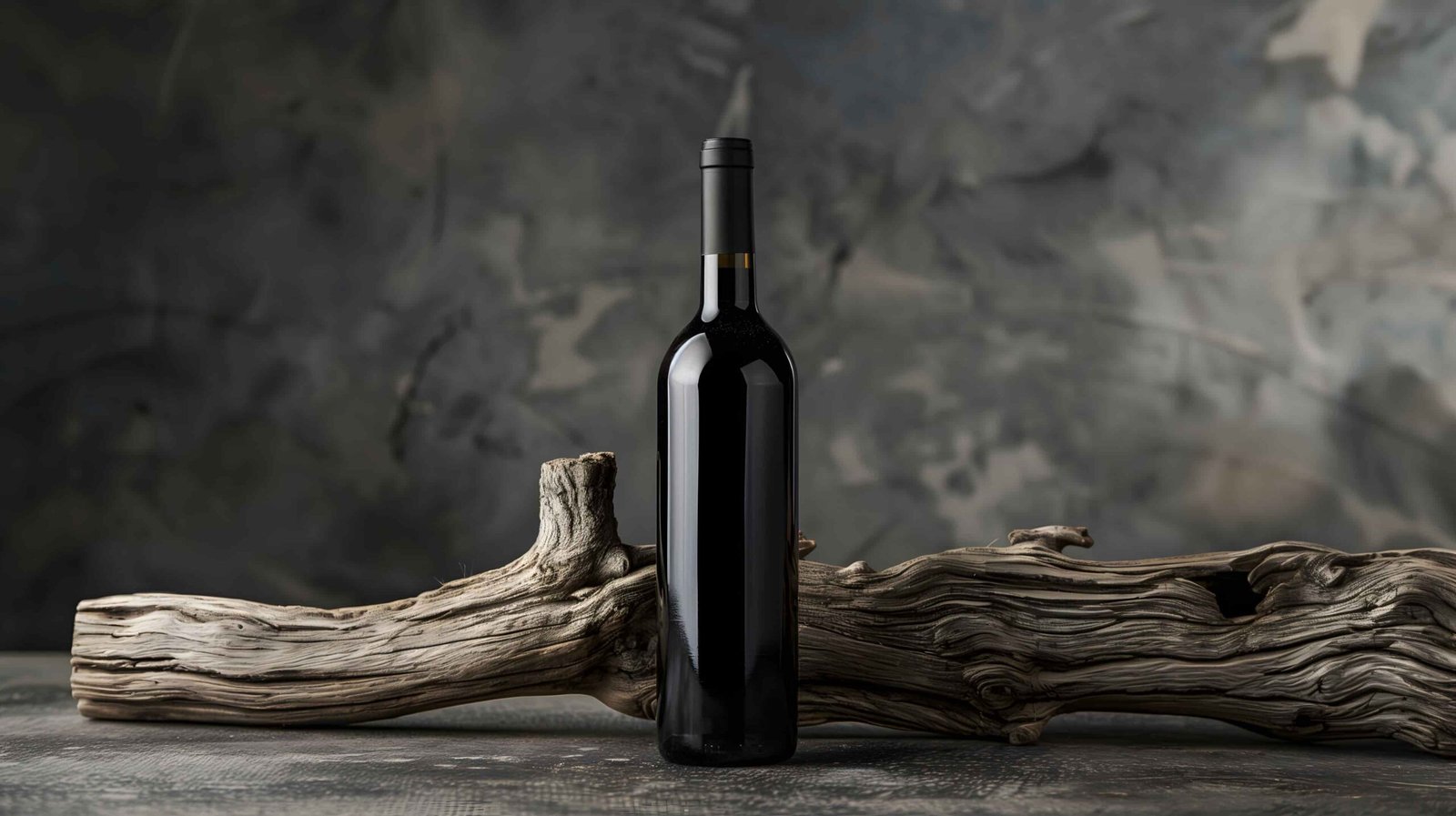Be it a luxurious wine bottle, an eco-friendly water bottle, or an artisan beer bottle, the quality and personality of your product deserve to come across in your images.
You would surely want to show all your bottle products with proper characteristics, isn’t it? Of course!
Below, we will outline some of the best tips and techniques for bottle product photography in 2024 to enable you to show professional-looking and attractive results.
What is Bottle Product Photography?
Bottle product photography covers a professional branch of photography concerned with photographing bottles, beverages, cosmetics, or whatever in the most attractive and sellable way.
Unlike other forms of eCommerce product photography, bottle photography has disadvantages in plenty: reflective surfaces of glass, variances in shape, and intricacies regarding label designs. Bottles master the art of using the right equipment, proper lighting, and post-production techniques.
Different Types of Bottle Product Photography
There are many varieties of bottle product photography, and each of them has its particular needs. We will discuss below some main categories:
Wine Bottle Photography
Wine bottle photography has become very popular, especially for luxury brands. So, what’s the context behind it?
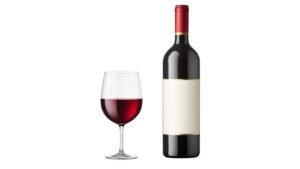
Well, the idea is to accentuate the elegance and quality of the wine by focusing on the design in the bottle itself, the label, and quite often the cork or foil. Since wine bottles are usually colored in dark hues, most are glossy.
Water Bottle Product Photography
Water bottles, particularly the reusable variety, are heavily marketed based on practicality and being ‘green’. Capturing this clean-and-transparent quality of the bottle, while maintaining the branding, is key in effective water bottle product photography.
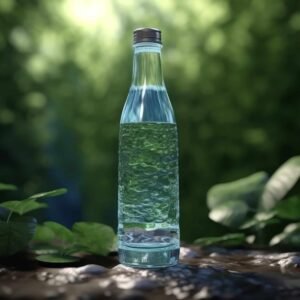
This category will also cover water bottle photoshoots where the emphasis is on visually communicating bottle functionality.
Beer Bottle Product Photography
Product photography of beer bottles tends to capture the personality of the brand, be that rustic craft or sleek and modern. What do you find most difficult when shooting wine bottles?
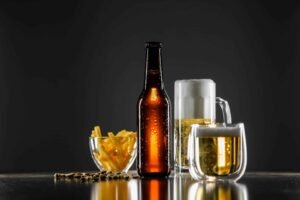
Probably, the biggest challenges seem to be trying to manage the reflections and getting the color of the green or clear to pop in the frame.
Essential Equipment for Bottle Photography
Shooting Bottles If one has proper equipment, then the results can be great. Here is what one will need to get great images of bottles:
Camera and Lens
First of all, one needs to understand that a DSLR or mirrorless camera is needed to provide professional shooting of bottles. The camera should be fitted with a high-resolution sensor. So, are there requirements for lenses in case this is the case?
Of course, this would be matched at best either with a macro or prime lens that can capture minute details such as the texture of the label or the subtle shimmer of condensation on a cold bottle. You also may want to take into consideration low-light lenses for wine or beer bottles to add strength to the mood in your pictures.
Lighting Setup
Arguably, the most critical factor when it comes to shooting a bottle is that of the lighting. One is going to want to make use of soft boxes and diffusers to control what’s probably a hard shadow and to get rid of the reflections on the surface of the bottle. In the case of shooting wine bottles, backlighting should be reverted so that shape and color come into view without reflecting whatsoever.
Props and Backgrounds
It also sets the mood for your product by choosing appropriate props and backgrounds. For example, if it is an expensive wine, then it should look fabulous on a dark-colored table made of wood or some nice marble surface.
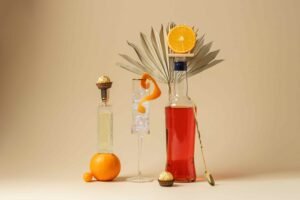
Let me elaborate on that a bit more: what would the subject of eco-friendly feelings be? In product photography of a water bottle, elements of nature could narrate the story of ‘eco-friendly’. The background should not distract from the product; it should complement the product.
Techniques for Stunning Bottle Product Photography
With the gear at hand, now it’s time to know techniques that would enable taking breathtaking bottle pictures.
Lighting Tips
Well, good lighting can make even a humble bottle photo shoot a high-end image. Therefore, shoot in very soft and diffused light to avoid hard reflections from any surface of the bottle. Now, the question that comes is what needs to be done so that one can handle lights over a reflective surface.
For more reflective surfaces like glass, placing the light source behind or beside the bottle would do better. You may even consider diffusers that soften the light and fill lights for details on the label and bottleneck.
Angles and Composition
A shot’s angle can make all the difference in how the bottle is perceived. Assume that eye-level shots will work great to show off your label, while low-angle shots make this bottle appear much larger and more imposing.
Overhead or flat lays can work amazingly for group shots or lifestyle settings, for instance, beer bottle product photography featuring a bottle with snacks or glassware.
Reflections and Shadows
Probably the most fanciful moments in bottle photography involve those dealing with reflections and shadows. While already a controlled lighting setup allows you to reduce unwanted reflections, do not get rid of them completely because subtle reflections add depth and reality to the images.
On the other hand, soft shadows will outline or give shape to the bottle and allow it to be differentiated from its background.
Common Challenges in Bottle Product Photography and How to Overcome Them
With all your best efforts, bottle photography has its own set of problems. Let’s dive into overcoming them.
Reflections & Glare
Bottles can be good pros in picking unwanted reflections sometime. Take them out using polarizing filters; having your light source at more of an angle should also serve to prevent reflections.
Achieving Consistency
That would be more reasonable for e-commerce websites or portfolios of brands. By shooting bottles with standardized lighting and backdrops, you will be able to achieve serial fashion consistency.
Post-Production
While post-production perfects that very product. Be it a color correction or background removal, editing makes just about the perfect image. Let’s say there is a water bottle for photography; after post-production, its clarity and transparency increase, and hence it might turn out to be more evocative.
Why Professional Post-Editing is Essential for Bottle Product Photography
Needless to say, editing plays a very crucial role in perfect bottle product photography. Even with the best light and composition, it takes your images to the next level. Study shows that products with better pictures have 94% more views than low qualities. And the post-editing procedure fills all the gaps.
Post-editing can turn your average bottle product photography to another level.
Clipping Path
The clipping path will ensure that the bottle is skillfully extracted from its background; it will fully control the presentation of the product. That can be even more useful on e-commerce sites, where clear and non-distracting backgrounds make all the difference when you try to attract prospective buyers.
Enhancements & Retouching
Apart from a simple clipping path, enhancements and retouching to perfect the outcome can be done: this may include color balance adjustment of the bottle, clarity enhancement of the label, or adding highlights to show off the bottle’s texture better. Regarding product photography for the case of a beer bottle, subtle reflections or highlighting droplets of condensation make the bottle refreshing and desirable.
Wrap-up
Mastering bottle product photography, and moving from a novice to a professional expert, would require a combination of equipment, technique, and post-production editing. Pay extreme attention to the minutest detail in lighting and angles, reduce reflections, and shoot stunning views that let your product be at its best.
Not only this, but professional editing services in clipping paths and retouching get your final images ready to make a long-lasting impression.

